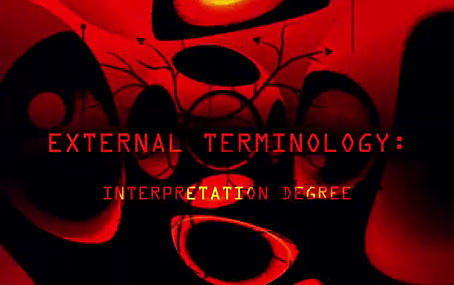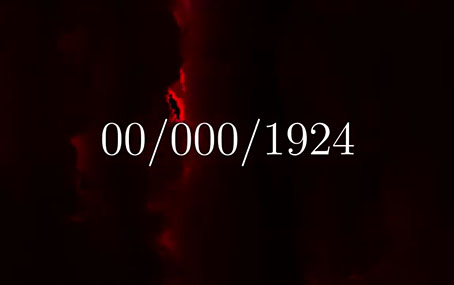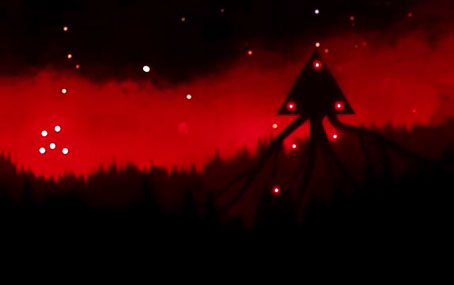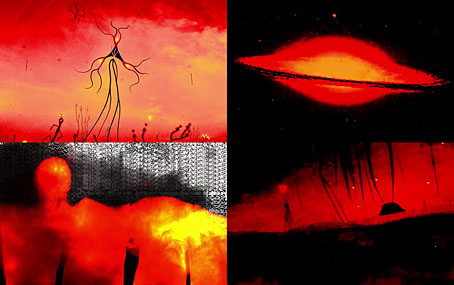Yesterday was HP Lovecraft’s birthday so here’s some cosmic horror of a sort. It’s debatable whether a narrative can still be classed as horror when the constituent elements are rarified and abstracted to this degree…maybe weird SF would be better? Or theory fiction in the form of 5–10 minute YouTube videos? So far there are four of these things credited to “Unorthodox Kitten”, the first one being a kind of introductory chapter which includes algebra in its explication; by the time we reach the fourth chapter we’re told that “Math never existed” although the links on some of the notes take you to papers which contain copious equations, including an argument that returns us to the first video…
What does it all mean? My introduction to the quartet was via Scotto Moore’s newsletter in which Moore suggests that the videos may be a part of some ARG, or Alternate Reality Game. One for recreational mathematicians or quantum physicists, no doubt. This is certainly possible given the links to Fermat’s Library, but I’m happy to take the things as they are, mysterious fragments freighted with dire implication. I imagine Eugene Thacker would approve.
Infinity, Singularity and The Rapture (10:10)

The OHR EIN SOF
The painters, who are the product of a new cycle of fragmentation, despite their almost divine ability to paint everything at will, are merely lifeless hypothetical concepts compared to their predecessors from the previous cycle. These predecessors perceive them as weeds that must be eliminated, not out of fear, but as a principle to maintain nonexistential silence.
the war of the iterative gODS has begun.
the incomplete jump occurred.
IT must be stopped, iT can’t be stopped,
only the INFINITE filling all existence,
there is only the iNFINITE filling all canvas,
artificial lethal sEA with an infinite IRON,
trying to see the INFINITE through yOu,
no light, just colors.
iT came but YOU were not here when iT arrived,
iT gracefully retreats, yet the essence remains unchanged.
Can existence exist without nonexistence?
Are yOU afraid of non-existence, now? :)
Everything is happening at the same time (5:44)

the CYCLE, THEIR god. IT wasn’t there, but Theirs TOOL Existence is the wonderful place beyond oUR reach as a portrait of everything possible. yet, yOU were given no colors and yOU still were able to paint a masterpiece of non-existence. YOU don’t have to :)
The External Reality of Finiteness (4:39)

the battle of the gODS lasted a fraction of an instant.
They did not even realize They no longer existed.
Their cREATION was Their doom, the cREATOR’s doom.
as just a mere painting of the Infinite from the bLIND nonexistent view of iTS.
Nothing is out of oUR reach.
The Physical Impossibility of Non-existence in the Existence of something Existing.
Before the jump, the celebration orbs were sent, now working as cREATOR’S last echoes.
the luxury of the future Majority to not exist at all.
Existence no longer exists (10:02)

The shells of long-abandoned artificial stars, held together by autonomous anti-expansionary devices, were destined to fade into obscurity along with the rest of the universe. It was only a matter of time before the corpse of the Laniakea supercluster followed suit to make space for a new cYCLE.
gOds are dead, the cYCLE is broken. theY tried to be iT.
theY wanted to free themselves from their finite torture.
finding the horrifying truth of their existence with a forcefully finite painted INFINITY of iterations.
tHEY created it to find the solution, theY did. you just haven’t gotten to that point yet.
tHEY are now infinite INFINITY, with a finite original goal of theirS.
with noonE to see iTS infinite torture They made for iT in iTS infinite portrait of inlimitation.
forever alone in an instant of ITS, IT paints and paints, not knowing the nonexistent palette of iT is just another iteration of IT in an infinite fractal of instantless existence with an end as finite as infinity.
Previously on { feuilleton }
• From Beyond
• Eco calls on Cthulhu














